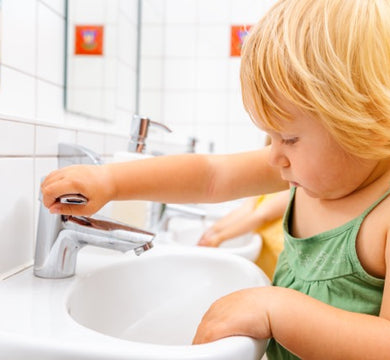Long Island should reduce the amount of lead that is allowed in school sinks and water fountains, according to a report from environmentalists last month. The schools in the region are old and have pipes that are made of lead.
The New York League of Conservation Voters, which authored the report, urges the state to adopt stricter drinking water standards to reduce lead levels in schools. The “5 is the new 15” report calls on the state to lower the active lead levels in school drinking water from 15 to five parts per billion (ppb).
“There is no safe level of lead exposure,” said Julie Tighe, the league’s president. “We know that in particular young children are at risk of neurological and behavioral health consequences associated with developing bodies and that is something that lasts forever. There is irrefutable damage that is caused from that, and it is something that is completely preventable.”
In 2016, the state remediated 47,887 drinking water sinks and fountains to bring the lead levels to code. At that time, the regulation was set to 15 ppb and cost the state nearly $27.8 million to fix.
If new regulations were passed, the project would require 63,427 more of these outlets across the state to be updated. The league estimates the cost to be $30 million to remediate the outlets within the five ppb to 15 ppb range.
“We do think that this would be well spent money by the state of New York,” said Tighe, “given we’ve already done this before, getting down to 15 ppb, and I think there could be funds made available for this purpose. We have a significant amount of funds for clear water infrastructure. This to me is clean water infrastructure.”
Some counties show more lead exposure than others. On Long Island, Senate District 2 has 30.6% of outlets between five and 15 ppb, which is the highest percentage among Senate districts. The district's senator, Republican freshman Mario Mattera, said he supports the initiative and is eager to watch the change happen.
“We need to make sure that all these older buildings are fixed and revamped to make sure we don’t have this lead in the water,” Mattera said. “[That means] either replacing our piping systems, or we need to do whatever we have to do with our drinking fountains that they’re going to be taken care of with this lead situation. Lead is a real serious problem; we all know that.”
Mattera hopes that money included in the next round of the federal coronavirus relief could be allocated to this project to help create jobs across the state.
“We will be hearing about this soon. That’s going to determine a lot — that $15, $16 billion that we’re going to be receiving — I really feel like [Senate Majority Leader Chuck] Schumer is going to be getting this done. So that’s going to determine a lot,” Mattera said.
A bill introduced in the state’s environmental committee proposes to amend the public health law relating to school potable water testing.
The remediation work in 2016 was to comply with federal regulations set at 15 ppb. At the time, there was no state drinking water standard for lead. Lawmakers adopted 15 ppb as the state standard in 2018.
If the bill is passed, a first-of-its-kind drinking water standard for lead in New York would be five ppb, among the lowest in the country.
New York is one of five states with a proposed lead level of five ppb or lower. Other states, including Washington, Michigan, Pennsylvania and Massachusetts, have proposed a one ppb lead drinking water standard.
Source: https://www.wshu.org/post/report-new-york-should-take-action-lower-lead-levels-schools#stream/0


